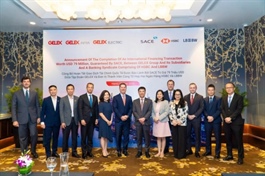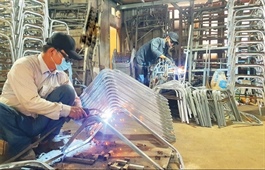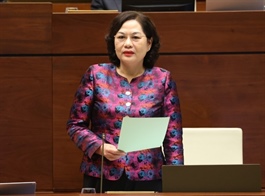High-tech incentives to emerge from CIT law reform
High-tech incentives to emerge from CIT law reform
Owners of a series of enterprises in Vietnam are set to be eligible for tax incentives under draft amendments to the Law on Corporate Income Tax, as part of the country’s efforts to lure in high-quality funding.
According to draft amendments to the Law on Corporate Income Tax (CIT), prepared by the Ministry of Finance and set to be adopted on June 13, special tax incentives are to be offered to many types of enterprises and projects.
The draft amendments are set to take effect from 2026 to help improve the quality of enterprises in the economy.
Clause 2 of Article 12 states that professions and sectors shall be subject to a 10 per cent rate for CIT within the first 15 years as of the time the project begins. This covers application of incubation and construction of high-tech business.
Besides that, those subject to such a tax incentive consist of production of software crucial IT products, cybersecurity products and related services, research and development (R&D), semiconductor chip production, and construction of AI data centres.
They also include products from the supporting industries of textiles and garments, leather and footwear, electronics and informatics, manufacturing and assembling of vehicles, and mechanical engineering.
However, these products must meet technical requirements of the EU or equivalents (if any) under instructions from the Ministry of Industry and Trade.
Also on the lists embrace production of renewable energy, clean energy, composite materials, light building materials, and rare and precious materials.
Beneficiaries also include investing into developing water plants, power plants, bridges, roads, railways, airports, seaports, and special infrastructure works determined by the prime minister, Article 12 stated. “They also cover manufacturing projects with capital of at least VND12 trillion ($480 million) which must be disbursed within five years from initiation. The Ministry of Science and Technology shall verify and appraise technology of the projects,” it adds.
Such a tax incentive shall also go to enterprises newly founding and expanding innovation centres, R&D, and development of the pharmaceutical industry with a capital size of VND3 trillion ($120 million) or more, whose at least VND1 trillion ($40 million) is disbursed within three years since the date of obtaining the investment registration certificate.
Agreeing with the move for such beneficiaries, National Assembly (NA) deputy Pham Van Hoa, representing the Mekong Delta province of Dong Thap said the beneficiaries are eagle enterprises with large scale and capital.
“We include tax incentives for these enterprises in the draft amendments to the existing law on CIT so that they can initially invest in Vietnam, then we will collect taxes,” Hoa said. “After several years, we will likely collect more tax. If we want to collect right from the beginning of the enterprises’ establishment, they will likely not invest. This is an issue I am very concerned about.”
NA deputy Tran Kim Yen, representing Ho Chi Minh City, also cited the draft’s Article 12 as stipulating principles and beneficiaries of CIT incentives, including vehicle manufacturing and assembly.
“We also know that such manufacturing requires a large investment. The time needed to research and develop a product is quite long, while the competition in the market is very high,” Yen said. “However, it is necessary to stipulate that automobile manufacturing with a specific percentage of localisation shall be exempted or reduced from CIT to encourage the development of these industries. If it is only assembling for the foremost brands, it is necessary to carefully consider whether to give tax incentives or not.”
Under the existing law on CIT, the tax rate of 10 per cent shall apply for 15 years to incomes of enterprises from the execution of new initiatives in extremely disadvantaged areas, economic zones, and high-tech zones.
It is also applied to incomes of enterprises from the execution of new projects, including R&D; application of high technologies in the list of prioritised high technologies according to the Law on High Technologies; cultivation of high technologies and enterprises; and development of biological tech and environmental protection.
Moreover, the tax rate of 10 per cent shall apply for 15 years to incomes of firms from the execution of new ventures in production, which meet one of the two criteria: either investment is at least VND6 trillion ($240 million) disbursed within three years and total revenue reaches at least VND10 trillion ($400 million) within three years of revenue being generated, or it employs more than 3,000 workers.
- 08:00 03/06/2025




























